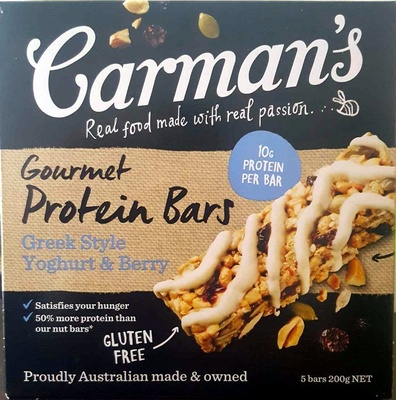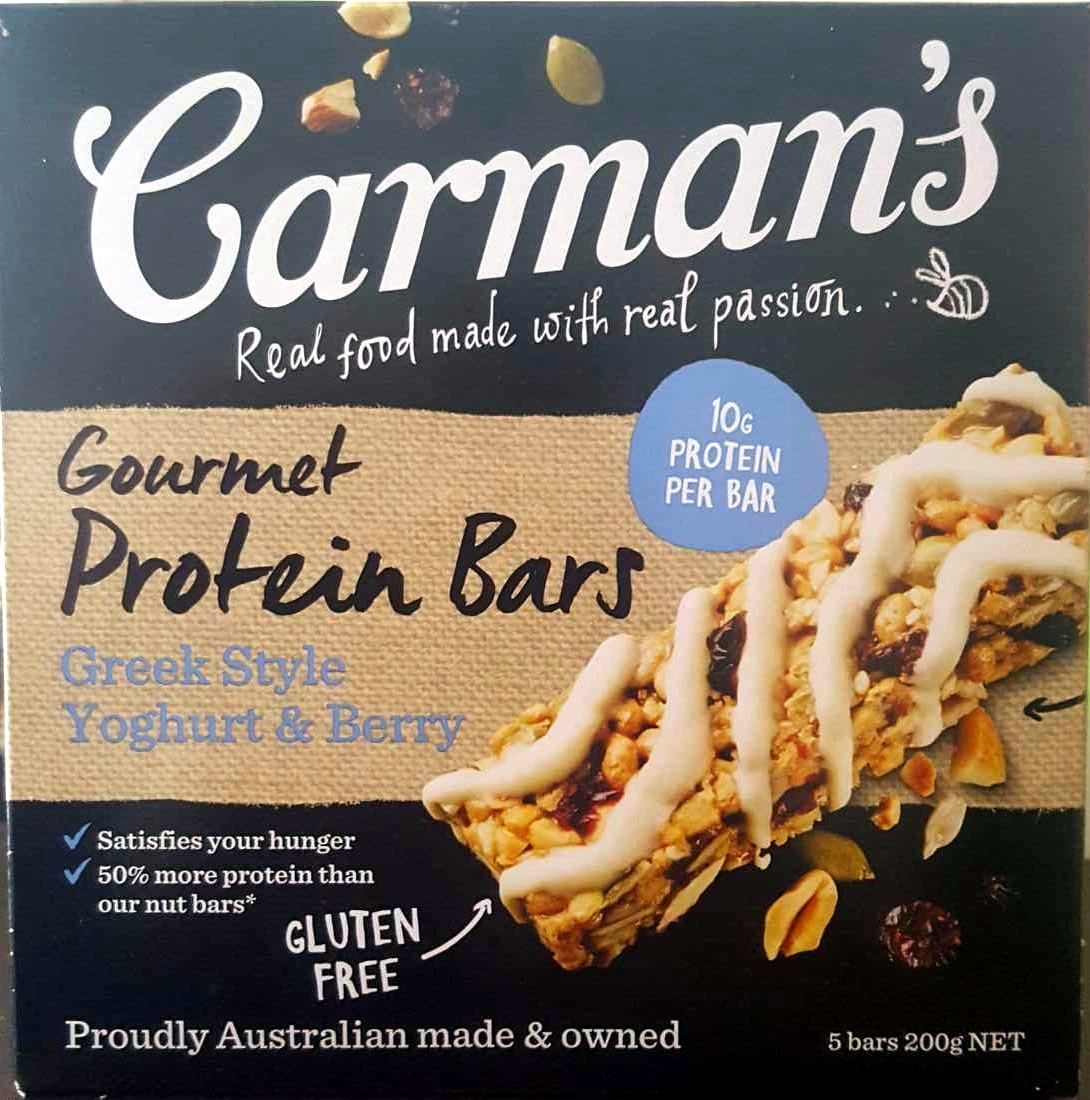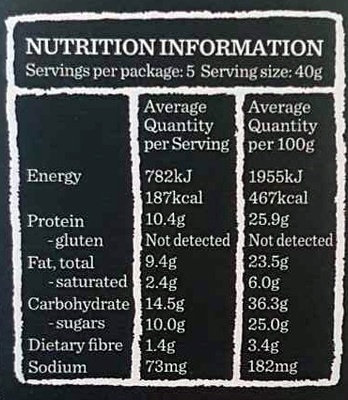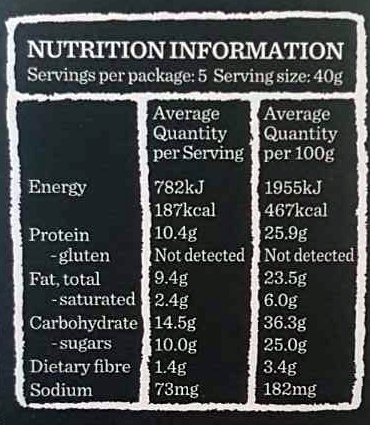Proteine bar yoghurt & berry - Carman's - 200g 5 bars
This product page is not complete. You can help to complete it by editing it and adding more data from the photos we have, or by taking more photos using the app for Android or iPhone/iPad. Thank you!
×
Barcode: 9319133333550 (EAN / EAN-13)
Common name: Muesli bar
Quantity: 200g 5 bars
Packaging: Box
Brands: Carman's
Categories: Snacks, Sweet snacks, Bars, Cereal bars, Dietary supplements, Bodybuilding supplements, Protein bars
Labels, certifications, awards: No gluten, Australian made
Origin of ingredients: Australia, Imported Unknown
Manufacturing or processing places: Australia
Link to the product page on the official site of the producer: http://www.carmanskitchen.com.au/our-pro...
Stores: Coles, Woolworths, Officeworks
Countries where sold: Australia
Matching with your preferences
Environment
Packaging
Transportation
Report a problem
Data sources
Product added on by clockwerx
Last edit of product page on by foodvisor.
Product page also edited by archanox, foodorigins, inf, kiliweb, openfoodfacts-contributors, packbot, roboto-app, stephane, tacite, yuka.WFlNR01ZVUNuTlVZaXRrQTF6M1Z5TkJLL2NLdFRXbTFlOFViSVE9PQ.










